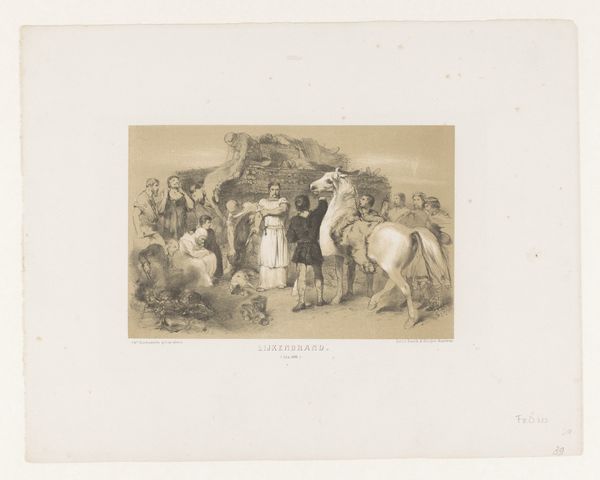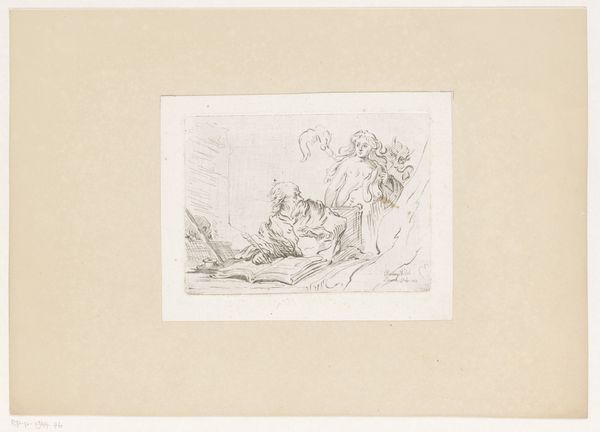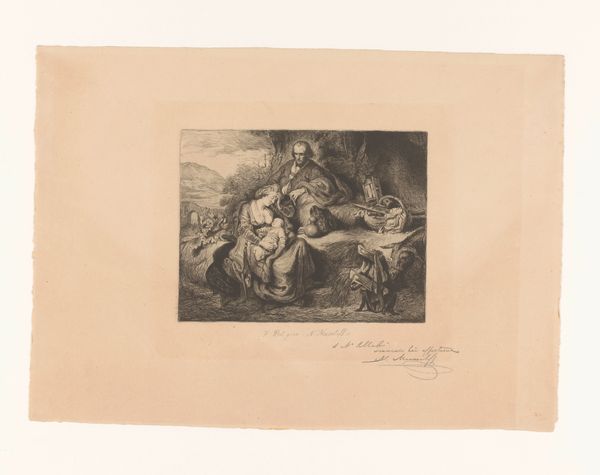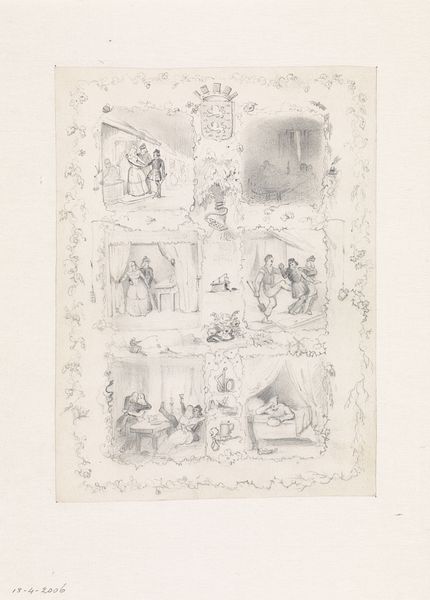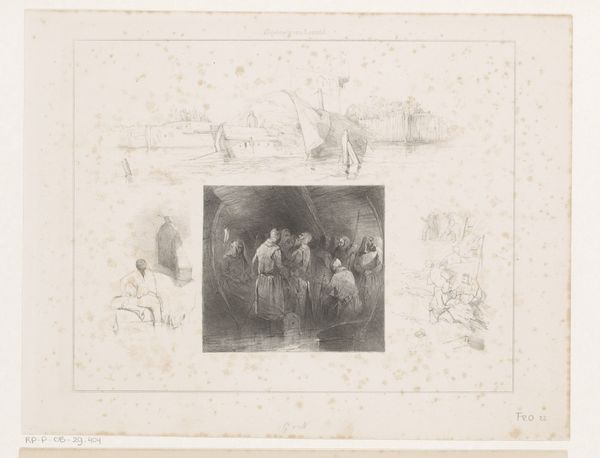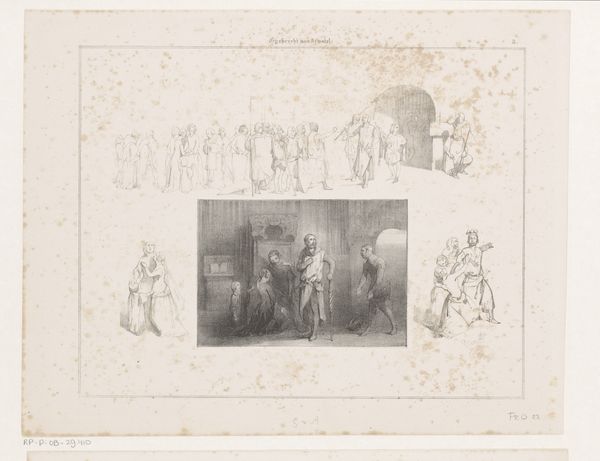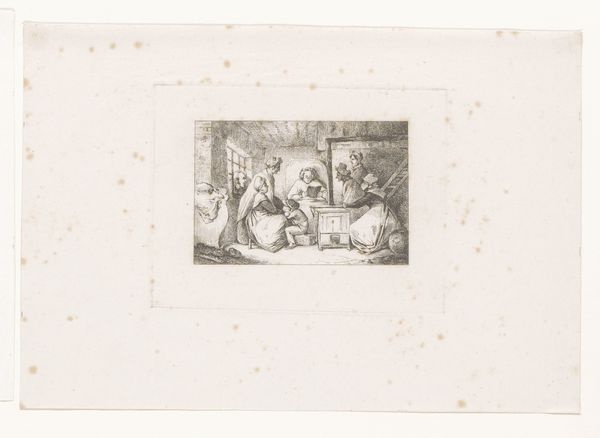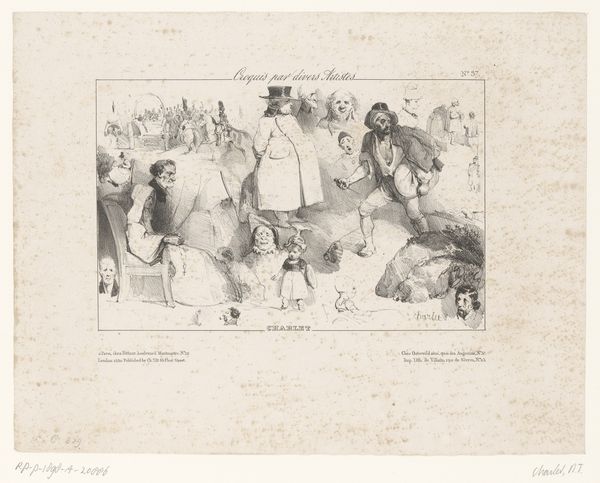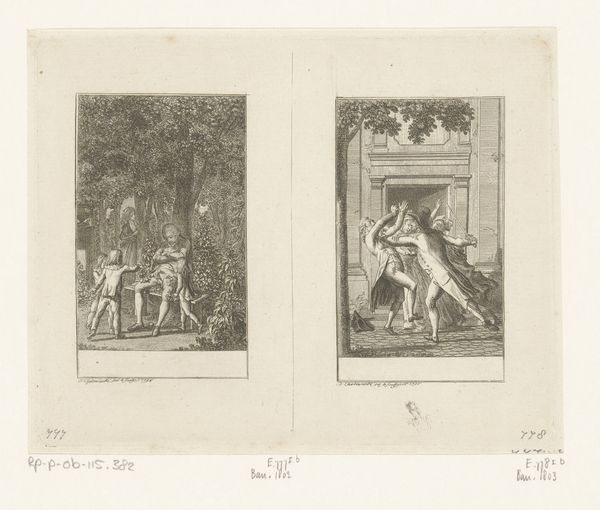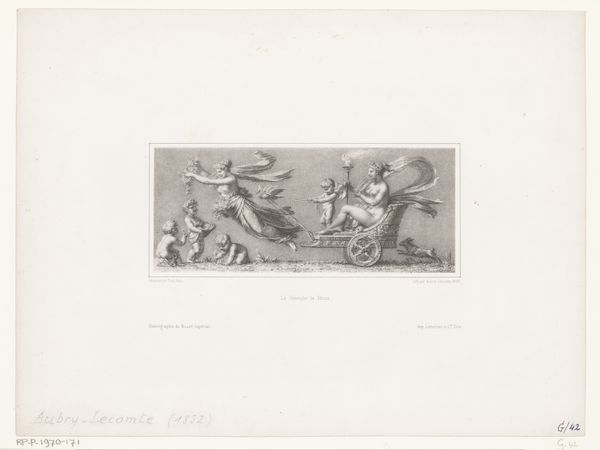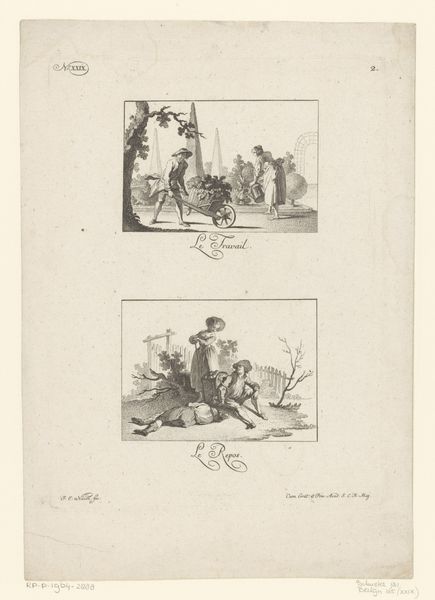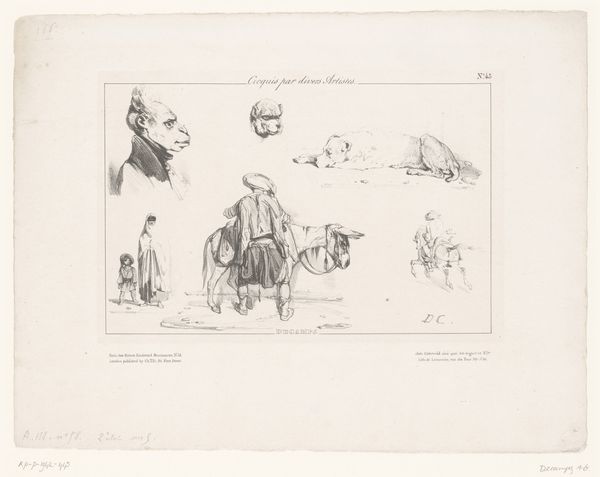
drawing, pencil
#
drawing
#
pencil sketch
#
landscape
#
pencil
#
horse
#
line
#
history-painting
#
realism
Dimensions: height 346 mm, width 320 mm
Copyright: Rijks Museum: Open Domain
Curator: Here we have Eugène-Louis Lami’s 1830 pencil drawing, "Three Sketches of Coachmen, Horses and Carriages.” What are your initial thoughts? Editor: Chaotic! There’s a flurry of energy implied by the rapid pencil strokes. It evokes the feeling of a busy stable or coaching yard—a scene of almost frenetic movement. Curator: Note Lami’s sophisticated handling of line. See how the varying densities create depth and volume, effectively communicating the weight and musculature of the horses? It's a study in contrast—bold, confident lines juxtaposed with delicate, almost ephemeral shading. Editor: And the sketches reveal so much about social class and power dynamics. The imposing figure in military dress, the hierarchy evident in the relationship between the coachmen and their wealthy passengers...It paints a vivid picture of 19th-century French society. Curator: Exactly. The composition—or rather, the lack of one unified composition—is critical. These disparate sketches, unified only by their medium, are exercises in observation. Lami isolates elements for study: a coachman's posture, a horse's gait. Editor: These sketches could easily become symbols of their era. Each tiny moment has relevance to themes like transportation, societal mobility and its limits, and, perhaps inadvertently, animal exploitation. It's a dense drawing that inspires many conversations. Curator: It also touches on the visual vocabulary of realism which began to rise during that era. Here, Lami avoids romanticising the scene—instead, the artist commits to depicting things as they are, warts and all. Editor: Right! Through careful attention to form and function Lami highlights individuals in specific situations at a transformative time, yet avoids directly praising the supposed ‘greatness’ of historical actors like the Napoleon stand-in. Curator: So, although seemingly simple, these three sketches offer remarkable insight into not only Lami’s skills as a draughtsman but also into the social and aesthetic currents of his time. Editor: It makes one consider how artists choose their subjects, and whose stories end up being preserved in art historical record.
Comments
No comments
Be the first to comment and join the conversation on the ultimate creative platform.

